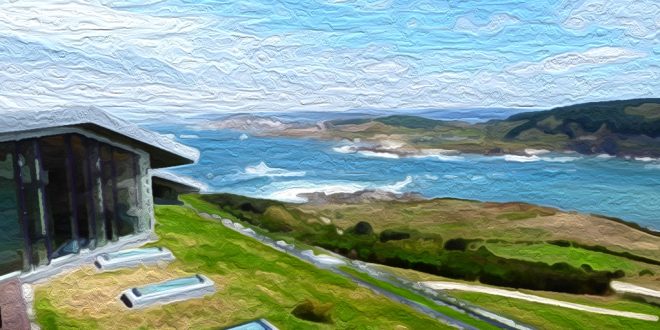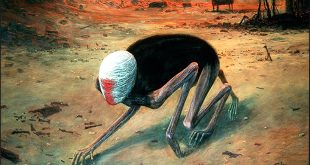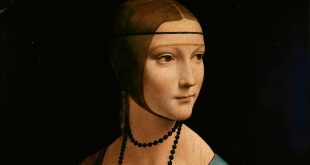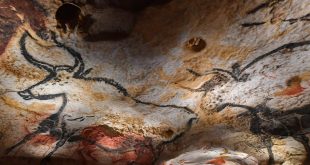Muxía, Yoshiro Tachibana and the wild beauty of Galicia
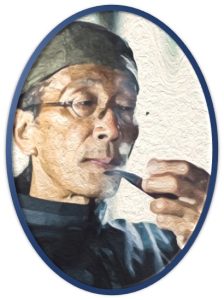
Meeting Benches stands out from other art blogs for its unique and poetic nature, in fact, it embraces art in all its forms. Meeting Benches is a virtual meeting and inspirational place dedicated to travelers, artists, thinkers and dreamers from all over the world. Here, virtual “benches” act as a connection point, creating an atmosphere of sharing and inspiration that allows people to share art, travel stories and thoughts. In essence, this is a digital refuge for those who love art and creativity. You can find articles on emerging and established artists, art galleries, poems and travel stories similar to what the Japanese painter Yoshiro Tachibana has immortalized in his mystical scenarios. Type in “Author Travels” if you want to know more. The images accompanying this post are by digital artist Dastilige Nevante. As we continue reading, we offer you some phrases in Spanish that capture the essence of Muxia and Galicia, where the sea screams its passion and the land responds with its silent strength: “Nuestras vidas se definin por las oportunidades, dentro las que perdemos.” (Our lives are defined by opportunities, even those we lose.)
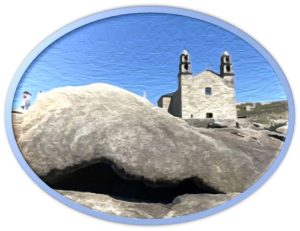
If you are in the area, consider visiting a picturesque town in northwestern Spain, Muxía, where the wild and the sacred intertwine, and every wave carries a secret to reveal. This coastal town in Galicia, known for its beaches and fishing industry, is part of the “Coast of Death”, so called because of the many shipwrecks along its rocky shore. One of the most important landmarks in the area, standing on a rocky ridge above the waves, is the Santuario da Virxe da Barca. Nearby, you’ll find the “Pedra d’Abalar“, a large, solid, balanced rock that was once used to determine guilt or innocence in serious crimes. Belonging to the region of Finisterre, this territory includes the Monastery of Moraime and the Santuario da Virxe da Barca, where pilgrims arrived on their way to Santiago de Compostela. Razed to the ground by the Normans and Muslims, and, in the Napoleonic era, by the French, the city continued to prosper. An evocative path passes through the majestic capes and lighthouses along the coast of Galicia. In this regard, unlike Finisterre, in the small Muxia it is possible to experience an atmosphere particularly dear to the Japanese painter Yoshiro Tachibana, who lived on the slopes of Mount Corpiño. Regarding his life choice, he recalls this Spanish saying: “Amor y deseo son dos cosas diferentes; que no todo lo que se ama se desea, ni todo lo que se desea se ama.” (Love and desire are two different things: not everything you love, you desire, nor everything you desire, you love.)
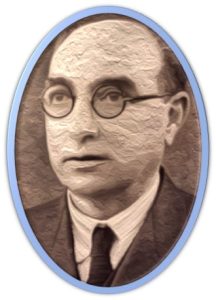
Gonzalo López Abente was also born here, of whom we offer you a poem: THE TEMPEST – The boat was brave and the leader who directed it was risky. The crystal of the sea returned under the painful clouds that swallowed it up the rays of the sun. The wind was coming, lifting and beating the white foam. The spark formed a brilliant line in the terrible midst of the storm, and what a wild mountain beast the salty sea was agitating. The white candle went out, the mast creaked, the crusts melted in the waters, the ropes of the apparatus puffed and, like a greyhound in the countryside, my crazy boat runs and sings among the waves of the sea. In all the shadows you can see the rudder of the boat restless on an unwashed road. The royal storm, the fierce wind and the sea that twists and roars with rage, are not able to divert the path of my boat. The heart is strong, the arm is strong, the love is stronger so far. Run well, black boat, from my lighthouse like a star shines! My love my love, I come to you quickly! Suddenly a black and deep abyss opened its mouth under the keel. The boat capsized in the bilge and fell badly injured. The nail groaned, the candle went away with the mainmast that supported it, and amidst a frightening roar a foaming waterfall can be seen at the top. Like an arrow shot from a bowstring I rode on the crest of the boiling wave, wrapped in the whiteness of the waterfall. I set out in search of my hope. Courage heart, the lighthouse is near, once again from my love.
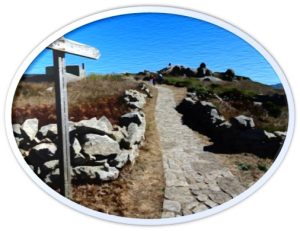
Monte O Corpiño, a hill located in the Costa da Morte region, can be reached via a ramp from the Santuario da Virxe da Barca. A hermit lived on this mountain in the 8th century, gaining influence throughout the region due to his reputation as a special and holy person. Upon his death, a small sanctuary was built in honor of his incorrupt body, hence the name “O Corpiño“. Walking along its windy paths, you feel the magic of this place, where nature reigns supreme and the soul is free. Look around, you will find a stone cross that seems to protect the town of Muxía below. Admire the Ría de Camariñas-Muxía and Cabo Vilán, as well as the sanctuary with the iconic monument called “A Ferida“, which has become an integral part of the landscape. Enjoy the views of Cabo Touriñan, Punta da Buitra and Punta Cachelmo. Further inland, you will see Monte do Facho, another beautiful viewpoint. Now you too know why Yoshiro Tachibana built his house on the slopes of this mountain. Why that one? Simple: “If you want to understand a person, don’t listen to their words, observe their behavior.” (If you want to understand a person, don’t listen to their words, observe their behavior.)
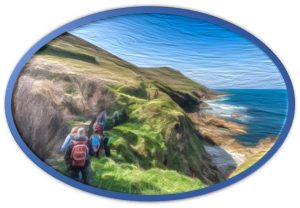
To reach the top of the mystical Monte O Corpiño, you can follow the well-marked hiking trails. Start your hike at the Santuario da Virxe da Barca, with its rugged cliffs and breathtaking views of the Atlantic Ocean. Optionally, you can take the Camino dos Faros, a long-distance trail that passes through Muxía and offers breathtaking coastal views. You have little time. Too bad! In these timeless places, you should think about how you are using your time. However, there is a specific trail, PR-G 122 Ruta Monte O Corpiño, that takes you directly to the top. Wear comfortable shoes and bring water, especially in the warmer months. For any updates on trial conditions and advice, ask the locals or the tourist information center. Are you familiar with Stendhal Syndrome? As you climb, the panoramic views of the coast, the sanctuary and the surrounding landscape may stun you, making you appreciate the natural beauty and the meaning associated with the vertigo that is growing inside you. Yoshiro Tachibana loved nature, so trust him: “There are three things that cannot be hidden for long: the sun, the moon, and the truth.” (Three things cannot be hidden for long: the sun, the moon, and the truth.)
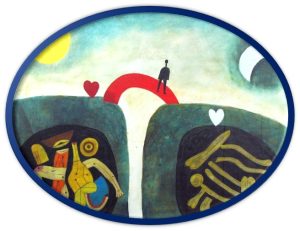
When he arrived in this region, so different from the usual or normal, so much so that it aroused perplexity, but also interest and curiosity, Yoshiro Tachibana, the wild painter of Muxía, experienced a sensation that escaped the common criteria of motivation or classification. Tachibana discovered that those places connected him to his Japan, he built a house there and met his muse, Paz, the woman who became his wife. Together with her, in the house on the slopes of the mountain, paintings were born connected to the style of Marc Chagall and Paul Klee, Edward Munch and Emil Nolde. “Nino“, as he was called by the locals, is now part of the cultural heritage of that fishing village, where he chose to live and die, in a house nestled in Mount O Corpiño. To say goodbye to that Japanese who knew how to make such a bold choice, we rely again on a Spanish saying: “Puedes ser solo una persona para el mundo, pero para una persona tú eres el mundo.” (Maybe to the world you are just one person, but to one person you are the whole world.)

I hope those Spanish phrases inspire you and bring you closer to the beauty of Galicia. In Muxia explore its historic center, where you can enjoy delicious cuisine and discover interesting places. Try traditional Galician dishes such as Galician octopus and pork with vegetables. You could choose between “A Furna“, a fine restaurant with typical and delicious dishes, or, for a simple but excellent dinner, “Bar o Porto”. What to see? For a lighthouse overlooking the ocean, don’t miss Faro Tourinan. Natural pools between the rocks? Calderas do Castro. Quiet and wild beach? Nemina Beach. Where to stay? The Parador Costa da Morte offers you panoramic views of the beach and the sea, immaculate rooms and a spectacular outdoor infinity pool. Before you leave, take one more look at the slopes of Mount O Corpiño and find a good real estate agent.
 Meeting Benches World art in all forms
Meeting Benches World art in all forms
